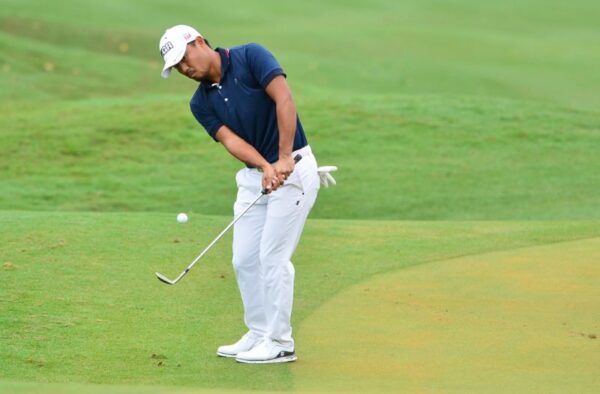Chipping – that art of sending the ball softly onto the green with precision – can be the difference between a birdie putt and a frustrating scramble. While the full swing gets most of the glory, mastering the chip shot is crucial for lowering your score. Here’s where chipping drills golf come in.

These drills help you develop feel, distance control, and a consistent chipping motion. Whether you’re a seasoned golfer or just starting out, incorporating chipping drills into your practice routine can significantly improve your short game.
Why Chipping Drills Matter
Imagine this: You’re standing off the green with a delicate chip shot. Nerves are high, and the pressure’s on. But instead of feeling anxious, you confidently address the ball, knowing you’ve practiced chipping drills golf religiously.

Here’s how chipping drills benefit your game:
- Muscle Memory: Repetitive practice ingrained through drills builds muscle memory, leading to a more consistent chipping motion. With each drill, you solidify the feel and rhythm needed for precise chip shots.
- Distance Control: Mastering distance control is paramount in chipping. Drills help you develop the ability to judge yardages and execute chip shots that land softly near the hole, regardless of distance.
- Improved Feel: Feel refers to your ability to sense how much power you’re putting into the chip. Chipping drills golf help you develop a delicate touch, allowing you to vary chip distance based on the situation.
- Confidence Boost: Consistent practice breeds confidence. Successfully executing chipping drills translates to feeling confident and prepared when facing chip shots on the course.
Top Chipping Drills for All Skill Levels
Now, let’s dive into some effective chipping drills you can incorporate into your practice sessions:

Beginner Drills:
- Target Practice: Set up several targets (cones, balls, etc.) at varying distances from the green. Focus on chipping the ball consistently close to each target, honing your distance control.
- Chip and Lag: Place two practice balls – one off the green and the other closer to the hole. Chip the first ball onto the green, then focus on “lagging” the second ball close to the hole. This drill simulates real-life scenarios where you might need to chip twice to reach the green.
Intermediate Drills:
- Halfway House Drill: Place a marker halfway between your ball and the hole. Aim to chip the ball so it lands and rolls to a stop on this marker before reaching the hole. This drill teaches you a controlled, bump-and-run chipping motion.
- Draw and Fade Chipping: Experiment with chipping the ball with a draw (slices in towards the target) and a fade (curves away from the target). This drill helps you master different chip techniques for different course situations.
Advanced Drills:
- Pressure Drills: Simulate pressure situations by setting up a scoring drill. For example, award yourself points for chipping the ball within a specific distance of the hole. This helps you stay focused and execute under pressure.
- Uneven Lies Drill: Practice chipping from uneven lies (uphill, downhill, sidehill) to develop your adaptability. This drill prepares you for real-world scenarios where perfect lie isn’t always a guarantee.
Chipping Drill Tips
- Focus on Feel, Not Power: Don’t overpower your chip shots. Focus on a smooth, controlled swing with good tempo.
- Maintain Consistent Setup: Establish a consistent setup routine for your chipping posture, ball position, and grip pressure.
- Shorten Your Backswing: Compared to a full swing, your chipping backswing should be shorter and more controlled.
- Practice with Different Clubs: Don’t limit yourself to just your pitching wedge. Experiment with chipping with your sand wedge or even your 7-iron to develop versatility.
- Track Your Progress: Keep track of your progress during your chipping drills. This helps you identify areas for improvement and celebrate your achievements.
Conclusion
By incorporating chipping drills into your practice sessions, you’ll be well on your way to becoming a master of the short game. Remember, consistency is key. Regular practice with these drills will build muscle memory, improve your feel, and ultimately elevate your chipping skills, leading to more birdies and lower scores on the course.



